
Top 10 Ways To Get High Without Drugs
Wanna get high—without drugs? In this article, we explore what it means to "get high", and provide 10 natural ways to experience a high without the influence of psychotropic drugs. From lucid dreaming and binaural beats to sensory deprivation, there's plenty to explore.
When we think of getting high, we automatically think about drug use. But what if "getting high" is more about a search for connection and inner peace? Could it be possible to get that kind of "high" without using drugs?
In this article, we'll explore what it means to get high, and shine a light on 10 different drug-free methods that'll leave you feeling connected and at ease.
Rethinking what it means to get high
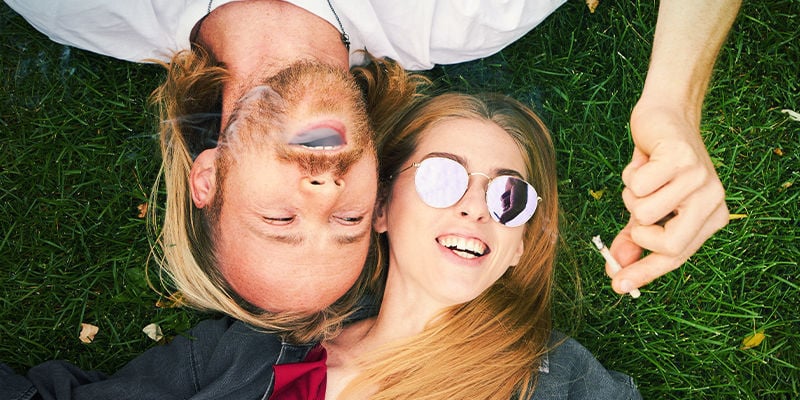
The term "getting high" is definitely loaded with negative connotations. For many people, getting high is synonymous with drug abuse, particularly the use of cannabis and various other legal and illegal substances. For some, the term conjures up images of a strong mind-altering sensation, psychedelic hallucinations, and a temporary loss of grip on reality. For others, it conjures even more extreme images of people pushing the limits of their psyche so far that they might never quite "return to normal".
But what if getting high meant something different altogether? If asked why we drink alcohol, many of us would likely respond that it helps us relax, improves our mood, and gets us in the mood to socialise. Those of us who use cannabis might add that getting high heightens our senses and increases our enjoyment of music, films, creative activities, food, and even sex (Deutsche Welle).
Meanwhile, for those who dabble in psychedelics such as magic truffles, for example, the answer to why they get high usually has ties to spirituality and harbouring a deeper connection to themselves and their surroundings.
In fact, the etymological history of the term "get high" seems to suggest that it is about much more than just abusing a particular substance to feel intoxicated. The term "high" has deep Anglo-Saxon, Germanic, and Norse roots that all relate to elevation, exaltation, thought, and understanding (Harper, 2022).
We also know that in many ancient cultures, spiritual leaders such as shamans and medicine men, for example, would use entheogens (which, for only the past 100 years or so, we started considering as drugs) as part of their spiritual practice (Sessa, 2022). So it seems that getting high is about something much more profound than just abusing a drug to get intoxicated; instead, the reason we get high seems to be linked with feeling exalted, relaxed, or above our normal state of being.
Understanding what gets us high
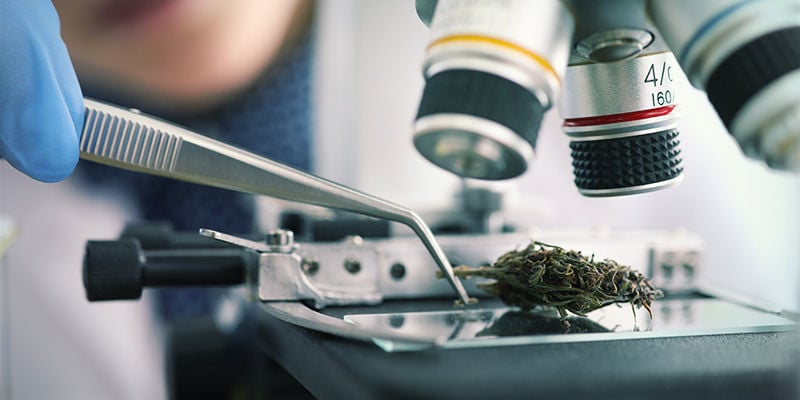
For the purpose of this article, it is not only important to comprehend why humans get high, but also the physiological processes that go on inside our bodies when we do. Given the limitations of this article, we obviously can't cover the mechanisms of action of individual substances, but we can explore the way drugs work in a more general sense.
Drugs contain active chemicals that act on receptors typically located on the surface of particular cells and/or enzymes in our body. In doing so, they usually either up or down-regulate the rate of certain chemical reactions.
THC, the main active compound in cannabis, works by activating CB1 receptors (found on the surface of a wide variety of cells all over the body). As a result, it increases or decreases certain chemical processes mediated by the human endocannabinoid system, and thereby delivers the myriad effects we associate with a cannabis high.
Most commonly, the active compounds in drugs affect the signalling of neurotransmitters like serotonin, adrenaline and noradrenaline, dopamine, glutamate, GABA, and endorphins. This change to neurotransmitter activity can have a wide variety of effects on people, including:
-
Changes in mood
-
Loss of inhibitions
-
Altered perception of time and space
-
Impaired speech, memory, and motor skills
-
Heightened perceptions
-
Increased enjoyment of already pleasurable activities
-
Visual or aural hallucinations
-
Psychedelic experiences with profound spiritual roots
The drug-free methods of getting high we'll cover further along in this article work similarly, invoking biological processes that temporarily down or up-regulate the activity of some chemicals in the body, causing sensations comparable to those of being high. As we explore each activity in more detail, we'll also explain the physiological processes it might affect, and the effects it may induce.
Note: The activities listed here don't typically produce such pronounced effects as what you'd expect from consuming a psychotropic drug. Their effects are much more subtle.
10 ways to get high without using drugs
Now that we understand the process of getting high from both a physiological and spiritual standpoint, here's an exploration of 10 drug-free ways to get high.
1. Holotropic breathing

Holotropic breathwork, or HB, is a practice devised by Czech-born, US-based psychiatrist Stanislav Grof. It involves rapid, controlled breathing and music to induce an altered state of consciousness (the holotropic state, which Grof likened to the Hindu concept of Atman-Brahman; the divine, true nature of the self).
Grof developed the technique in the 1970s following extensive research into psychedelic therapy (which focused particularly on the effects and therapeutic potential of LSD) after the legal use of LSD became ever-more restricted in the 60s.
The breathing techniques that make up holotropic breathwork basically use a controlled form of hyperventilation to change the balance of carbon dioxide and oxygen in the body. These chemical changes can induce states of altered consciousness (likened to those achieved during deep meditation or other spiritual rituals), which Grof and other HB practitioners and participants believe to be extremely beneficial for stress, anxiety, depression, and even PTSD, as well as offering a profound insight into the true self (Mead, 1994).
Note: Holotropic breathwork may have certain risks for people with heart problems or respiratory conditions. If you're interested in trying holotropic breathing, always do so in a guided session with a certified HB practitioner.
2. Running and intense exercise

Ever experienced a burst of euphoria after exercising? Colloquially known as a "runner's high", we now know that exercise triggers chemical reactions that produce a high characterised by reduced anxiety, improved mood or slight euphoria, reduced pain sensations, reduced stress, and more. For decades, researchers and the general public thought that a spike in endorphins is solely responsible for this phenomenon, but it’s actually likely caused by changes to the endocannabinoid system.
The research is in (and has been for some time); blood samples show that blood-anandamide levels peak after exercise. Anandamide is a cannabinoid produced naturally by the body that binds to CB1 receptors (the same receptors that THC binds to). While it has a much shorter half-life than THC, spikes in blood-anandamide levels can produce effects similar to those of a THC high (though much shorter-lived); euphoria, improved mood, reduced feelings of nervousness, etc. (Bergland, 2021).
3. Binaural beats
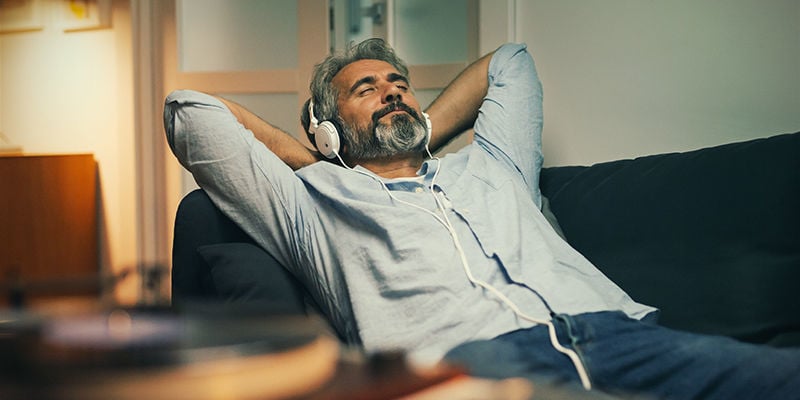
Binaural beat therapy uses sound to induce different mental states. These beats consist of two slightly different tones sent to the left and right ear via stereo headphones. The slight tonal differences sent to our ears create a kind of aural illusion, causing the listener to perceive a separate tone altogether. For example, if a person hears a tone of 320hz in their left ear and 360hz in their right, they gradually begin to perceive a tone of 40hz. Many people who listen to binaural beats claim that the brain's tuning to the different frequencies implied by the beat helps them enter different mental states, promoting deep relaxation or sleep, improving concentration or creativity, and encouraging deep meditation.
Binaural beats work according to the theory of brainwave entrainment (Huang & Charyton, 2008), based on research showing that exposing people to specific waves of light or sound can cause their brain to tune to those frequencies. It is generally thought that our brain activity can be categorised according to the frequency of our brain waves, which typically operate at the following rates:
-
13–40hz: Known as beta frequency brain waves, these are the fastest brain waves and occur during states of high alertness and concentration, as well as during states of anxiety.
-
8–12hz: Known as alpha brain waves, these waves are predominant during states of relaxed alertness, such as when we meditate.
-
5–7hz: Theta brain waves are more predominant during states of deep meditation, drowsiness, and dreaming.
-
1.5–4hz: The slowest brain waves, delta waves, occur during the deepest state of restorative sleep.
Binaural beats are readily available online and designed to tune your brain to the frequencies listed above, thereby inducing states of relaxation, meditation, and more.
4. Lucid dreaming

Lucid dreams are dreams where the dreamer is aware that they are dreaming. The act of lucid dreaming has received a lot of attention for its potential as a spiritual and healing technique. Arguably one of the most abundant sources of knowledge on lucid dreaming is Dr Stephen LaBerge, who headed multiple forms of research into lucid dreaming at Stanford University since the 1970s. Dr LaBerge describes lucid dreaming as having the potential to open a door to one's truest nature, as well as provoking profound spiritual experiences that can drastically change our understanding of reality and ourselves (LaBerge, 2015).
Dr LaBerge has also pioneered some lucid dreaming techniques designed to help people better experience their lucid dreams and take full advantage of their possible spiritual teachings. Some of the techniques developed by LaBerge and other researchers in the field include:
-
WILD, or wake-initiated lucid dreaming, involves having a hypnagogic hallucination that triggers the dream state directly from the waking state, in order to help preserve consciousness in the dream.
-
WBTB, or wake back to bed technique, involves using an alarm to wake up during the sleep cycle, stay awake for a short period of time, then go back to sleep in order to increase the chance of having a lucid dream.
-
MILD, or mnemonic induction of lucid dreams, was developed by LaBerge in 1980. It involves using memory to recall a particular dream prior to going to sleep in order to trigger a more lucid experience of an upcoming dream.
Lucid dreaming can have very different effects on different people. For some, the experience can be similar to a psychedelic experience, offering profound insight into the self. Overcoming nightmares and anxiety, as well as strengthening motor skills, are all supposed benefits of lucid dreaming.
5. Sex and tantra

During an orgasm, many parts of the brain are said to temporarily shut down (Le Page, 2005). And the immediate moments after having sex and reaching climax can easily be described as calm, relaxing, and restorative. For many people, this feeling is already quite profound and comparable to the sensation of being high. Practices such as tantra, however, can enhance this feeling even further.
Tantra originates from India in the 6th century, and has long been considered a revolutionary spiritual practice, leaving its mark on other religions and institutions, including Hinduism and Buddhism. The tantric practice is extremely vast, encompassing a wide variety of tantras (instructions, often written as conversations with a god or goddess) that form the basis for rituals invoking powerful deities said to grant supernatural powers and spiritual transformations.
Tantra techniques often use complex postures that provoke muscle exertion and help direct breathing to instill a state similar to that of deep meditation. Tantra also uses visualisation to evoke visual connections with tantric goddesses such as Kundalini. The British Museum describes the essence of tantra to be "about [the] transformation in the world, via the body, rather than transcendence of it" (Ramos, 2020). For many, a tantric experience or tantric sex can be compared to a moment of deep spiritual connection and bliss, producing sensations similar to deep meditation, and can manifest as reduced feelings of anxiety and depression, deep relaxation and connectedness, and improved mood.
6. Sensory deprivation tank and REST

Sensory deprivation tanks are isolated, dark, soundproof tanks typically filled with roughly 30cm of saltwater. The first tank was designed in 1954 by US physician and neuroscientist John C Lilly as part of his studies on consciousness in an environment free of external stimuli. In the 1960s, Lilly began combining the use of LSD and ketamine along with sensory deprivation.
Today, float tanks and sensory deprivation tanks are commonly found at spas and dedicated float centres all over the world. The tanks contain water saturated with Epsom salts (making it easier to stay afloat), which is also believed to reduce aches and pains, soothe the skin, and more.
The chemistry behind float tanks is similar to that of binaural beats; floating in skin-temperature saltwater in complete darkness and isolation is supposed to help the brain enter a state of deep relaxation (characterised by slow alpha and theta waves). Flotation-REST (restricted environmental stimulation therapy) is believed to have a wide variety of short and long-term effects, including:
-
Heightened creativity and focus
-
Reduced anxiety, stress, and depression
-
Reduced pain
-
Improved skin health
Many people also report having hallucinations during these therapies. Studies have also explored the benefits of REST for athletes, particularly in speeding up recovery, and research also suggests flotation therapy may evoke euphoria and improved mood (Santos-Longhurst, 2020).
7. Meditation
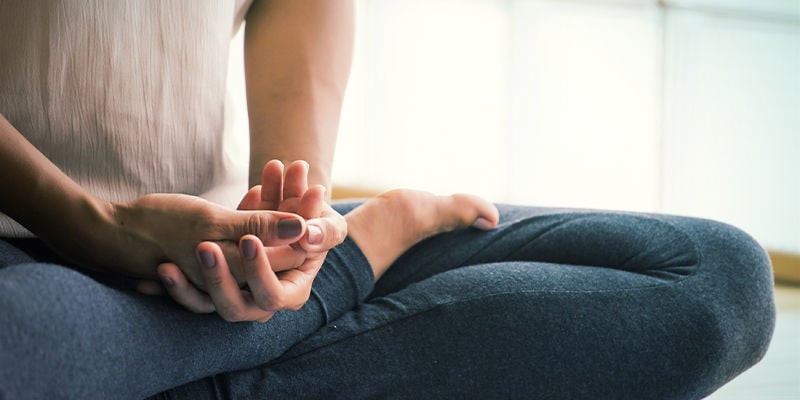
There are many different schools of meditation out there, and they all focus on different techniques, goals, and practices. Generally speaking, however, meditation aims to instill mindfulness and presence, focusing on temporarily calming the stream of endless, jumbled thoughts that race through our minds. Meditation can take many forms, including:
-
Mindfulness: Focusing the mind on the present moment or on a particular object.
-
Breathwork: Using controlled, focused breathing to calm the heart rate and slow brain activity.
-
Yoga or other forms of controlled physical movement, such as Tai Chi.
-
The benefits of meditation are well documented both in scientific literature and mainstream media. While everyone's experience of meditation is different, many people find that, especially with regular practice, it can potentially help:
-
Promote connectedness and mindfulness
-
Reduce stress and anxiety
-
Relieve symptoms of depression and anxiety disorders, such as ruminations and overthinking
-
Improve sleep
- Calm symptoms of stress, such as tachycardia, hyperventilation, high blood pressure, headaches, irritable bowel syndrome, and more
8. Fasting

While we generally think of fasting as part of diets or detoxes, it has long played a role in spiritual practice. One of the most obvious references to fasting in a spiritual context comes from the Bible, which preached it as a practice to help people connect with God, practice humility, and freedom. In Islamic culture, followers of the Islamic faith practice fasting for the entire month of Ramadan; not only as an act of devotion, but also to inspire gratitude and humility.
As with some of the other spiritual practices we've mentioned here, there is no one-size-fits-all approach to fasting. For some people, fasting can help set a path for a deeper connection with the mind and body; for others, it can serve as a type of regular cleansing. Some people also use fasting as a healing method to help with mourning or addiction.
When we fast, our bodies experience some drastic changes, including:
-
Cleansing: Fasts help our bodies cleanse toxins from the body.
-
Heightened metabolism: Without access to glucose from food, our fasting bodies produce their own energy from fatty amino acids and lactate (a process known as gluconeogenesis). In order to conserve energy as we fast, our metabolism also becomes more efficient, in turn lowering our blood pressure and heart rate.
-
Weight loss and better blood sugar balance: As our body enters a state known as ketosis (where it uses fat stores as a source of energy), we begin to lose weight and our blood sugar levels stabilise.
9. Thrilling activities
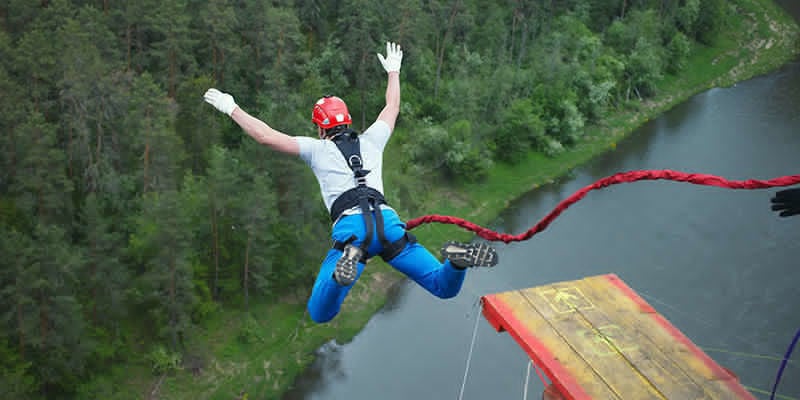
Ever gone bungee jumping or downhill mountain biking? If you have, you'll know exactly why we've included these kinds of activities on this list. Thrilling activities and adventure sports trigger one of the oldest chemical processes in the human body—a rush of adrenaline catalysed by our natural "fight or flight" response.
Jumping off a cliff, racing down a mountain on a bike, ziplining, cave diving, and a wide variety of other extreme sports all trigger this response, which induces a kind of natural high characterised by:
-
High blood pressure
-
Lightheadedness
-
Heightened senses and alertness
-
Razor-sharp focus
-
Increased strength and decreased fatigue
-
Bursts of energy
-
Decreased pain sensation
10. Eating certain foods
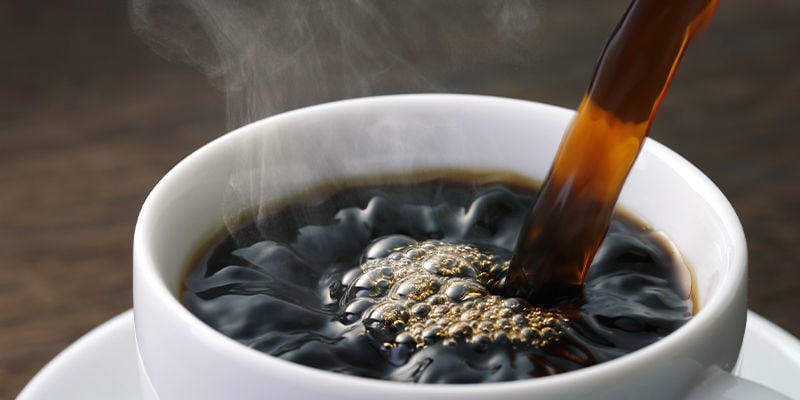
Sometimes, experiencing a natural high is as simple as ordering a coffee or taking a bite of some natural cocoa. Below you'll find a shortlist of just some of the foods that are able to cause a natural high:
-
Coffee: Coffee is a mild stimulant that helps to boost alertness, focus, and our senses. If you're looking for a mild buzz, an extra cup of Joe might be all you need.
-
Raw coca: Chewing dried coca leaves (the leaves used to make cocaine) is common practice in many parts of South America. Like coffee, coca is a mild stimulant that can help to reduce nausea, boost metabolism, curb altitude sickness or fatigue, and improve focus.
-
Raw cacao (aka ceremonial cacao): Rich in theobromine, drinking or nibbling on natural cacao produces a holistic hum often described as similar to coffee, but less jittery. In large doses (840g or more), ceremonial cacao can produce a strong euphoria similar to that of a runner's high.
-
Hot peppers: Eating hot peppers triggers a rush of endorphins, which can leave you with short-lived euphoria or a mood boost. Chilli peppers also contain capsaicin, which has some pain-killing properties.
In summation: How to get high without using drugs
So, there you have it; a list of ways to enjoy a natural, safe high without having to procure and use drugs that, for the most part, are still illegal and criminalised across most of the world. Besides showing you some simple ways to enjoy a natural high, we hope this article has also challenged the way you think about getting high in general, and helped you see that it's about more than just feeling intoxicated or getting giggly.
- Le Page, & M. (2005). Orgasms: A real 'turn-off' for women - https://www.newscientist.com
- Ramos, & I. (2020). What Is Tantra? The British Museum. - https://blog.britishmuseum.org
- Sessa, & B. (2006). From Sacred Plants to Psychotherapy: The History and Re-Emergence of Psychedelics in Medicine - https://www.rcpsych.ac.uk
- Bergland, & C. (2021). “Runner’s High” Depends on Endocannabinoids (Not Endorphins) - https://www.psychologytoday.com
- Deutsche Welle. (n.d.). (n.d.). News and current affairs from Germany and around the world – DW - https://www.dw.com
- Harper, & D. (2022). Online Etymology Dictionary, 2022. Definitions of High. - https://www.etymonline.com
- LaBerge, & S. (2015). Lucid dreaming techniques. Science and Non-Duality Anthology Vol. 5. - https://www.youtube.com
- Mead, & W. (1994). Holotropic Breathwork: A Conversation with Christina and Stanislav Grof, MD - https://www.youtube.com
- Santos-Longhurst, & A. (2020). Everything You Need to Know about Sensory Deprivation Tank Therapy. Healthline. - https://www.healthline.com
- TL Huang, & C Charyton. (2008). Huang, T.L. and Charyton, C. (2008). A comprehensive review of the psychological effects of brainwave entrainment. Database of Abstracts of Reviews of Effects (DARE): Quality-assessed Reviews. - https://www.ncbi.nlm.nih.gov
-
 6 min
22 May 2025
The top 10 most bizarre legal highs
Legal doesn’t mean safe—or smart. This list explores 10 strange and sometimes powerful legal drugs that highlight just how weird drug laws can be. It’s not a list of recommendations—just a glimpse...
6 min
22 May 2025
The top 10 most bizarre legal highs
Legal doesn’t mean safe—or smart. This list explores 10 strange and sometimes powerful legal drugs that highlight just how weird drug laws can be. It’s not a list of recommendations—just a glimpse...
-
 6 min
27 November 2024
Top 15 Things To Do While High
Have you ever wondered how to make the most of your high? This article explores 15 fun and creative activities to enjoy while under the influence of cannabis. From making music and painting to...
6 min
27 November 2024
Top 15 Things To Do While High
Have you ever wondered how to make the most of your high? This article explores 15 fun and creative activities to enjoy while under the influence of cannabis. From making music and painting to...
-
 3 min
27 April 2017
How To Get High Without Using Cannabis
Due to the endocannabinoid system, our bodies are equipped to receive signals from various compounds found anywhere from the leaves of a plant to a slice of cheese. Just like cannabis, these...
3 min
27 April 2017
How To Get High Without Using Cannabis
Due to the endocannabinoid system, our bodies are equipped to receive signals from various compounds found anywhere from the leaves of a plant to a slice of cheese. Just like cannabis, these...
-
 2 min
5 August 2015
Can Binaural Beats Get You High?
We test out some binaural beats, and assess whether they live up to the hype. There is certainly something special about them, but how far does it go?
2 min
5 August 2015
Can Binaural Beats Get You High?
We test out some binaural beats, and assess whether they live up to the hype. There is certainly something special about them, but how far does it go?





 United States
United States











